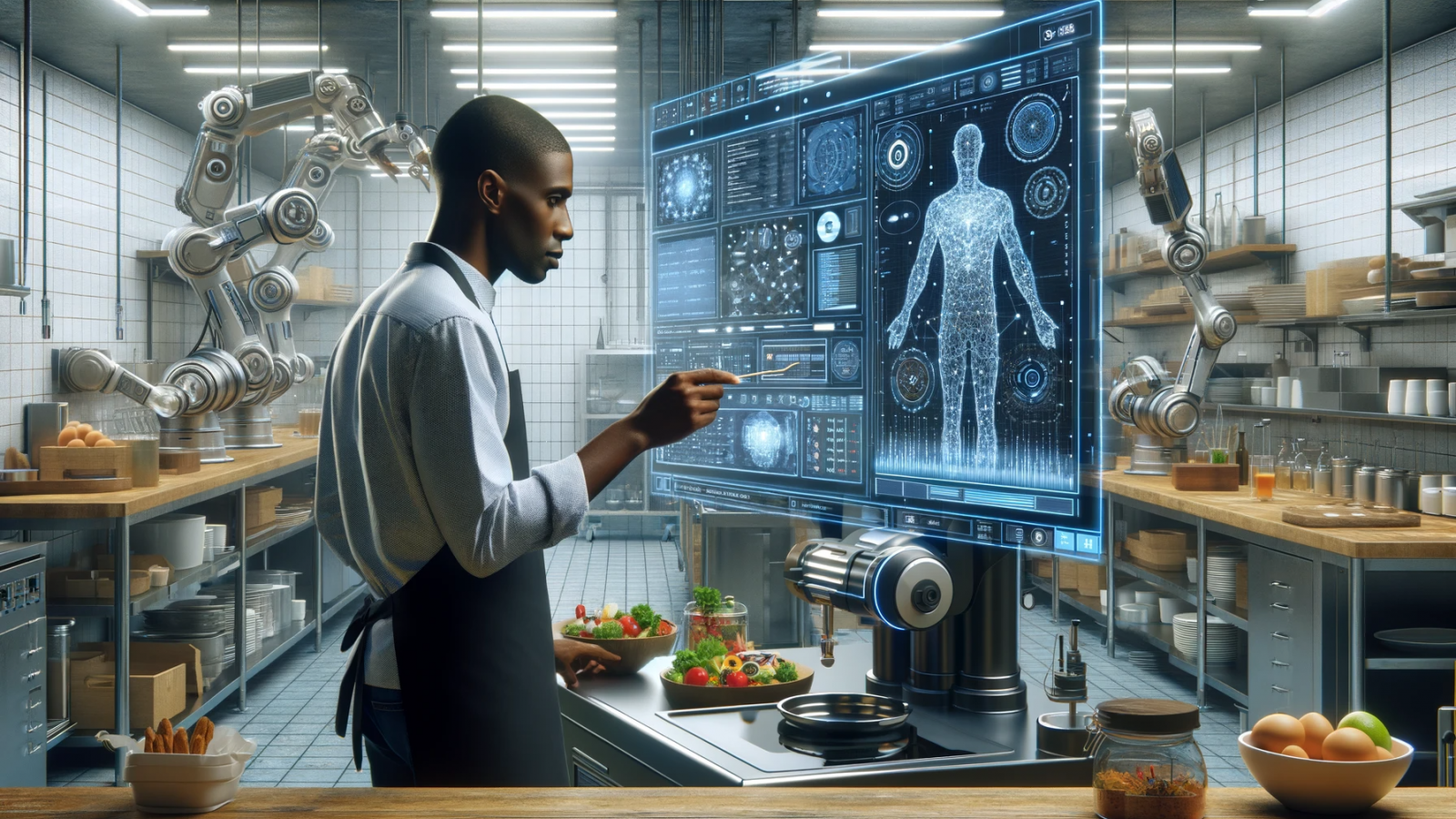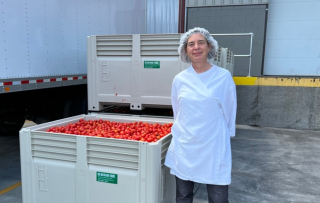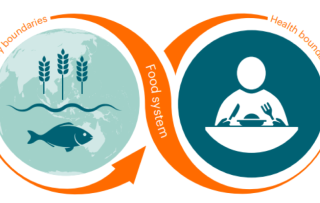ChatGPT has been around for over a year now. Food innovator and generative AI expert, Steve Gundrum, who beta-tested ChatGPT a few weeks before its release in November 2022, is convinced that AI will soon impact all aspects of our lives. “AI is the most transformative technology that we’ll experience in our lifetimes and it improves at a rapid pace.” With Gundrum, we investigate the potential of generative AI within the food industry.
This article is part of a two-part series. Read also part two: Six opportunities for generative AI in foodservice
Steve Gundrum is Chairman and Chief Creative Officer at Mattson, a food innovation company. With over 40 years of experience, Mattson combines trend forecasting, market research and product development to create successful products for food industry customers. Together with Cornell University, Mattson has recently launched Mattson AI Lab@Cornell for ongoing AI research.
A multitude of options
“The developments in the past year were remarkable. When OpenAI released ChatGPT, suddenly we had this powerful new tool at our fingertips to dig into a very vast, complex world of information. Today, there's not just one generative AI tool; we have a multitude of options for text and image generation like OpenAI’s ChatGPT and Dall-E, Google Bard, Anthropic and MidJourney. For me, it has been fascinating to engage with all these different tools, because, like people, they have different personalities and skill sets. In our tests, Google Bard has proven to be remarkably effective when it comes to food and for food image creation, we're big fans of MidJourney. However, the capabilities of various large language models (LLMs) are changing very rapidly. They're getting better super fast.”
“Search is good at facts and current events while AI is geared for creativity, perceptions and perspective.”
Five food-centered AI guiding principles for the future
According to Gundrum, there are five food-centered guiding principles that food service professionals should consider when starting to work with AI:
-
RI plus AI™ (you need both Real Intelligence and Artificial Intelligence)
-
AI as a thought partner (don’t use it as a search engine)
-
AI as a useful proxy for consumers and industry professionals
-
Exploration as the number one benefit
-
Prompt engineering as the crucial future skill
1. Real Intelligence plus Artificial Intelligence™
“People should view generative AI as a thought partner, whether they're using it to create a text response or images. That’s why we call it ‘RI plus AI™.’ None of these AI tools are very effective if you don't have a good foundational, real intelligence about food to feed them. Just think of foodies, home cooks and food professionals and how they all have different experience levels in food. If you're a chef or a restaurant operator, your level of understanding of food is above average and continues to grow. The more informed and skilled you are on the Real Intelligence side, the better your output from AI will be. Simply because you know what kinds of questions to ask. You’re better at providing relevant context. A prompt that you enter in AI is, in fact, a briefing. Once you learn to write your prompts as briefings, you get much better responses.”
A chatbot doing search…
“When ChatGPT came out - and still - lots of people treated it like a chatbot doing a search. That's the least effective way to use it, but it’s logical to think that way. You're sitting down at a keyboard in front of a computer, and you have a box with a blinking cursor that's asking for your input. The only frame of reference you've got is that we've been using search engines like Google search for decades now. So you lean into that. And then, if you get a response that's either not satisfying or not accurate, you dismiss it and you say AI isn't a good tool. That's too bad because you're just asking it to do the wrong thing. It's like asking your dentist to do brain surgery.”
2. AI as a thought partner
“The number one misconception is that generative AI is an advanced type of search. It’s not. They are opposites. Search is good at facts and current events, while generative AI is geared for creativity, perceptions and perspectives. AI is about dreaming and connecting the dots. You should not use generative AI when you are searching for facts or specific data. If you want to look up the annual trend of sparkling water sales in the US over the last 15 years by different regions ... you use search, not AI.”
3. A useful proxy for consumers and industry professionals
“What makes generative AI so powerful for food is that it is an excellent proxy for consumers and professionals. The reason for that is the amount of food information that's publically available is extensive. There's probably no topic that has been discussed more than food. It's discussed at a science level, at an agriculture level, on a policy level, on an industry level and then there is the number of consumers who've published recipes, started a blog and reviewed restaurants. It's almost like generative AI was designed for the needs of the food industry. The amount of published information about food is stunning.”
4. Exploration is the number one benefit
“Exploration is the number one benefit of generative AI. Its ability to tap into billions of data points and interconnect them is unparalleled. Every professional has areas of expertise; some of us are subject matter experts in very niche markets or topics. The impressive thing about generative AI is the vastness of what AI understands and its ability to go deep in any of those areas, but then also its ability to connect the dots. Search, on the other hand, cannot interconnect in the same way.”
5. Prompt engineering is the crucial future skill
“It's all about prompt engineering. You have to learn to put your request into context. You can't just say ‘Can you give me an idea for a great new burrito?’ It won’t come up with anything useful because it’s too broad. But imagine you are talking to a chef about creating a new Mexican burrito experience in Europe. The chef is going to start asking all kinds of questions. 'What do you mean by a burrito experience? What would be the price point? What are the demographics of your customer base? You have to include all that information as context.' Once you regard writing prompts as detailed briefings, you will get more satisfying results. It's not just a simple question.”
“Once you learn to write your prompts as briefings, you get much better responses.”
What’s better? Make someone the subject matter expert on AI or train everyone on the team?
“I can be short in answering that. Everybody needs to learn AI. I would say it is not a good business model to just have one person be an expert at it. It's an essential skill now. Would you hire someone that says I don't use email or the internet? It’s only the people that reject technology and fail to adopt it in their routines that will lose their jobs because of AI.”
“There's one exception. And that’s the ability to create generative images with tools like MidJourney. Although basic skills will come in useful for everyone, that platform takes more time and skill to learn. The learning curve on generative AI images is steeper than it is on a generative AI text.”
“In our company of 65, every person here has been trained multiple times on how to be a prompt engineer. We have capabilities across the company. The skill levels to use it vary somewhat, but overall it improves everybody's ability to do their work, be more productive and perform at a higher quality level.”
What are your tips for people that want to start with AI?
"Commit yourself to learning it. You simply have to spend a lot of time studying it to become good at it. Especially as the technology advances at lightning speed. Commit yourself to a single model. Learn how to write good prompts, by constantly testing and experimenting."
Research shows large language models like GPT-4 can dramatically boost productivity, quality and creativity
In September 2023, the results of a study were released by Harvard Business School Technology & Operations Management. that quantified how LLMs impact the performance and productivity of knowledge workers. In the words of Gundrum: “The results are mind blowing.”
The public release of large language models (LLMs) has sparked tremendous interest in how humans will use artificial intelligence to accomplish a variety of tasks. The paper examines the integration of AI with a ‘jagged capability frontier’ into real-world, complex, knowledge-intensive work tasks using randomized field experiments with 758 professional consultants at Boston Consulting Group. The frontier represents tasks AI can and cannot effectively accomplish. There were two distinct experiments: one with a task designed to be inside AI's capabilities and one outside.
Five major takeaways from the study
-
For the task inside AI's capabilities, involving product innovation and development, consultants using AI completed 12.2% more subtasks, 25.1% faster, with over 40% higher quality responses compared to the control group without AI. All model specifications showed significant AI benefits.
-
Consultants at all skill levels benefited from AI, but it helped below-average performers the most, increasing their scores by 43% versus 17% for above-average consultants, compared to their own baseline scores without AI. This suggests AI can raise overall performance and reduce skill differences between employees.
-
For the task designed to be outside AI's capabilities, requiring nuanced data analysis, consultants using AI were 19 percentage points less likely to produce correct solutions than the 84.5% correctness for the control group without AI. However, even when incorrect, consultants using AI wrote higher quality recommendations, with 25% higher scores. This shows AI can influence performance in complex ways, both positive and negative.
-
The unpredictability of this new frontier poses challenges for professionals to know when and how to use AI effectively. Successful users behaved either as "Centaurs" strategically dividing activities between themselves and AI based on capabilities, or as "Cyborgs" tightly integrating with AI. These groupings from the paper, represented through mythological creature names, are used to describe two broad approaches and philosophies for how to integrate AI technology into daily work.
-
Organizations should not just decide whether or not to adopt AI, but should consider it selectively for components of knowledge workflows and proceed accordingly. As AI capabilities grow, professionals will need to constantly recalibrate their understanding of what is inside or outside the frontier and adapt workflows. Successfully integrating AI requires changes like training, new roles, responsible AI best practices and considering how to plan for innovation as AI reshapes activities.
.jpg-28x28.jpg) Written by
Written by 
























